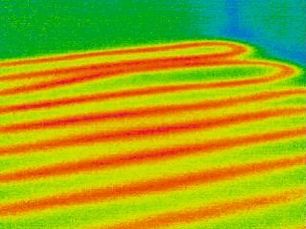Thermal Imaging
Thermal imaging (infrared scanning) is a powerful diagnostic tool that displays the surface temperatures of objects. Air leaks, water infiltrations, and thermal bridges all have their own unique surface temperature pattern which the infrared camera can see . Thermal imaging can also be used for commissioning and trouble shooting of mechanical and electrical systems.
IBES has a certified Level 1 Thermographer, who has the experience and knowledge to interpret the results of infrared scans and determine if there are any issues. Potential building envelope issues range from air leaks (through the air/vapour membrane barrier, window/curtain wall assemblies, doors, electrical/mechanical penetrations) to missing insulation. Infrared scans can also observe areas of moisture accumulation in wall and roof assemblies, which indicate areas of potential mold growth. Thermal imaging can be a useful tool for commissioning and trouble shooting mechanical and electrical systems, especially hydronic heating systems, because it can quickly provide the relative temperatures of equipment and areas, which is used to determine if things are operating correctly or malfunctioning depending on the situation.
All tests are conducted in accordance with well-known and accepted industry testing standard procedures. Examples of some utilized testing standards are:
- CAN/CGSB 149-GP-2MP-1986 Manual for Thermographic Analysis of Building Enclosures
- ASTM E1186 Standard Practices for Air Leakage Site Detection in Building Envelopes and Air Barrier Systems

Air leak around exterior water bibb

Air leak around window assembly

Retained moisture on exterior wall

In-floor heating hydronic lines